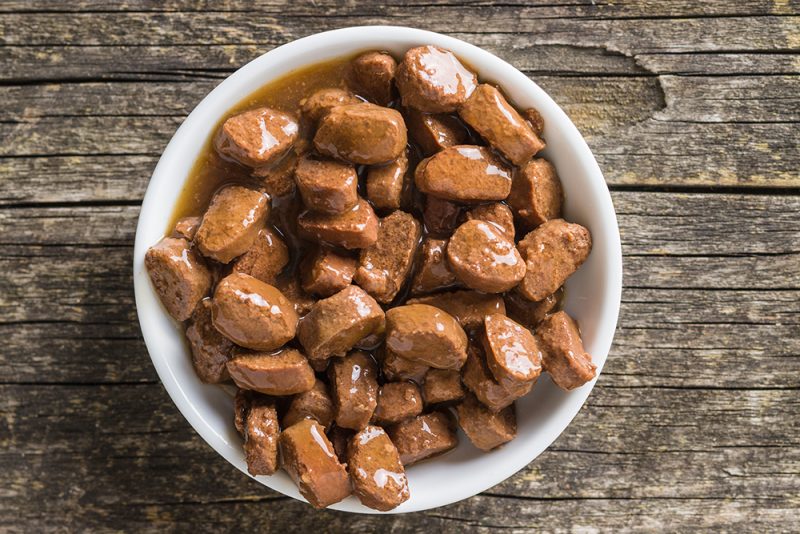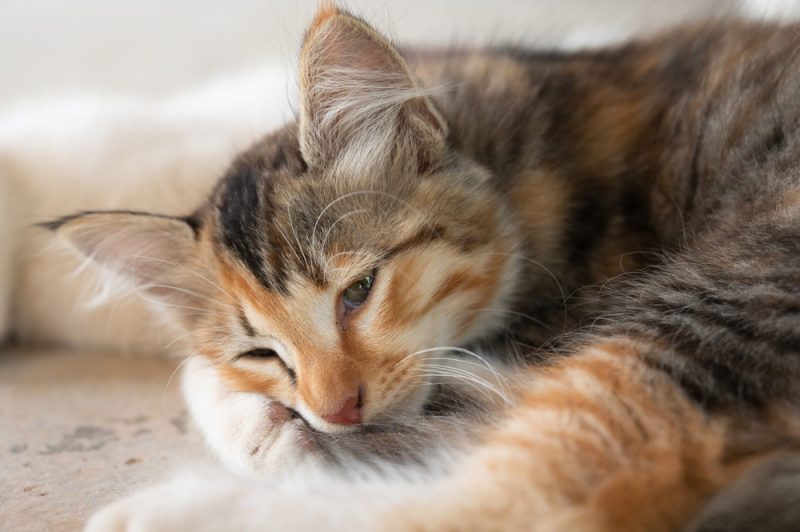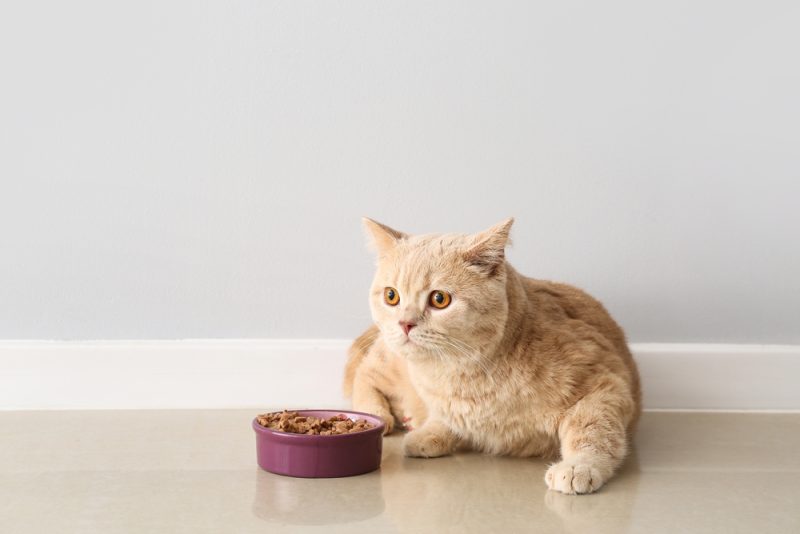The clock starts ticking as soon as you open the can of your cat’s food. Wet cat food will grow bacteria, accumulate bacterial toxins, and spoil faster than dry food.
In general, wet cat food can only stay out for about 2 to 4 hours before it becomes potentially dangerous for your cat to ingest. However, you can safely leave it in the refrigerator for 3 days. We’ll explain how long you can leave wet cat food out and offer tips to keep your cat healthy and safe.


How Long Can You Leave Wet Cat Food Out?
Wet cat food usually contains about 80% moisture and a lot of organic material, so it’s perfect for microbes to multiply. Although mold does not begin to grow for at least 24 hours, bacteria can multiply in just 20–30 minutes under optimal conditions, quickly making food unpleasant and dangerous.

Dangers of Leaving Wet Cat Food
Do not leave wet cat food out for more than 4 hours when the room temperature is above 50°F. Like bacteria Salmonella, E. coliand Campylobacter thrive as temperature, nutrition, and moisture increase, and wet food offers the perfect environment for contamination. If the room is warm. humid, or poorly ventilated, can speed up spoilage, with food often going bad within 2 hours.
As wet cat food deteriorates, it dries out and turns into a gel to give the food an unpleasant texture and taste. Coupled with a cat’s natural aversion to spoiled food, this is usually enough to deter them from eating stale food, reducing the risk of illness. However, if they choose to eat bacteria-tainted foods it can lead to gastrointestinal tract infections. If mold grows in the food, there is a risk of mycotoxins that can cause signs of toxicity ranging from chills to vomiting.
Signs of Foodborne Illness
Age and health status can affect a cat’s susceptibility to disease, as the potential is higher for young, elderly, or immuno-compromised pets.
Depending on the pathogen, food poisoning may become apparent within hours or days after your cat eats the contaminated food.
Signs of a bacterial infection include:
- Vomiting and diarrhea
- No appetite
- Dizziness
- Fever
- Stomach ache
Cats can also spread infectious germs to others in their feces or saliva even if they don’t get sick, putting the whole house at risk if their food spoils. Food poisoning can cause serious complications, including sepsis, which can, in severe cases, be fatal.

How to Store Leftover Wet Cat Food
Bacterial growth slows dramatically in cold temperatures, so if your cat can’t finish an entire can of wet food in one sitting, you can refrigerate the leftovers. Cat food can last about 3-5 days in an airtight container when the refrigerator is 40°F.
For convenience, you can buy cheap silicone lids that tightly seal an unfinished can, keeping it fresh for later.
How to Get Your Cat to Eat Their Food
Because you have a short window to leave wet cat food in your pet’s bowl, making a routine will make your cat more likely to eat when you serve them. Give your cat their food at the same time every day, and try not to leave it more than 30 minutes apart. It is best to feed your cat twice a day.
If your cat hasn’t eaten everything yet, save the rest until the next mealtime. Eventually your cat will learn not to waste time when you feed them. They may be leaving food in large portions, so check the feeding guide and talk to your vet about how much they should be eating.
If wet food doesn’t appeal to your cat, try putting it in the microwave for 10–15 seconds. Cats enjoy warm food, and a quick zap can make it more appealing, especially after you take the food out of the fridge. You may also need to switch to dry food or a combination of wet and dry to give your cat the desired taste and texture.

Can You Leave Dry Cat Food Longer?
Because it contains only 5%–10% moisture, dry cat food is less conducive to microbial growth than wet cat food. Its formulation also involves a high-heat process that kills many preexisting microbes, although contamination can occur in later stages of production.
Properly storing and serving dry food is convenient for many owners, allowing them to free feed their cats with minimal health risks. Although various environmental conditions, such as humidity, ventilation, and cleanliness of the bowl, can affect the rate at which it spoils, dry food can usually stay outside all day (or even several days) in optimal conditions. If dry food gets wet, it spoils faster.
If you leave the food dry, you should still check it frequently for signs of spoilage. Veterinarians recommend emptying the food bowl daily, which allows you to clean the bowl and refresh the food to ensure it is safe and appealing for your cat. Although significant microbial growth can take several days in some situations, pests can contaminate the dish, and the food can spoil long before that.


Final Thoughts
The high-moisture composition of wet cat food provides some health advantages over dry varieties, but the benefits don’t come without some distinct costs. Because wet food can spoil in just 2–4 hours, owners don’t have the luxury of setting and forgetting the bowl, and depending on your routine and your cat’s preferences, it may be a no-no. practical way to feed your pet.
By understanding how long wet cat food lasts and the best practices for using it, you can determine if it is ideal for keeping your pet happy and healthy.
Featured Image Credit: Svetlana Rey, Shutterstock



